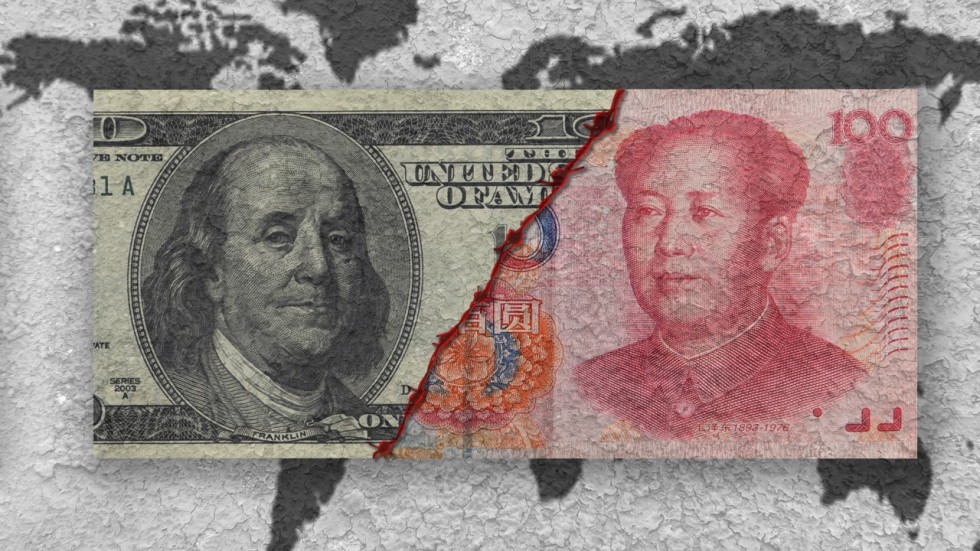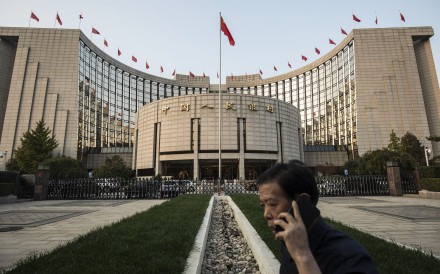- Joined
- Sep 22, 2008
- Messages
- 76,523
- Points
- 113
Economy›China Economy

China economy
China is underestimating its US$3 trillion dollar debt and this could trigger a financial crisis, says economist
PUBLISHED : Friday, 16 November, 2018, 7:31am
UPDATED : Friday, 16 November, 2018, 4:27pm
COMMENTS: 81


Karen Yeung
Business
Karen joined the SCMP in 2017 after more than 15 years experience on global newswires in Hong Kong and Shanghai. She spent eight years in Shanghai and has received awards for best feature, analysis and agenda

81
PrintEmail
RELATED TOPICS
China economyYuanUS-China trade war: All storiesUS-China trade warGlobal Financial CrisisFederal ReserveCurrencies
More on this story

OPINIONYuan depreciation should not be a worry as China’s central bank steps in
4 Sep 2018

CHINA ECONOMYBeijing to cushion – not stop – yuan decline in long run
12 Nov 2018
Related
Massive domestic debt has long been a headache for Beijing, but it is China’s growing external US dollar leverage that is being underestimated and it could possibly trigger a major financial crisis, according to Kevin Lai, chief economist for Asia excluding Japan at Japanese investment bank and securities brokerage Daiwa Capital Markets.
China’s US$3 trillion dollar debt makes it especially vulnerable because of tightening US dollar liquidity, a weakening yuan and the ongoing US-China trade war, said Lai.
Is China about to let the yuan weaken below seven to the dollar?
Global dollar debt outside America has risen to US$12 trillion today from US$9 trillion in 2013, according to Lai. Of that total, 25 per cent, or US$3 trillion, has been borrowed by China Inc and its subsidiaries in Hong Kong, Singapore and the Caribbean. China’s US dollar cross-border claims have risen faster than any other emerging economy’s despite its partially closed capital account.
In response to two financial market challenges – the “taper tantrum” in 2013, when the US Federal Reserve started tightening monetary policy; and an attempt by the People’s Bank of China to reform the exchange rate in August 2015 – China took on even more dollar debt, instead of paying it down and resolving fundamental issues with corporate efficiency and governance.
“Can this trade war push the world’s dollar debt further to US$13 trillion or US$14 trillion?” said Lai, adding that the size of dollar debt globally was probably peaking given US dollar tightening. This would lead to investors selling their assets to get back their dollars and paying back their dollar debt. “We will be talking about a major financial crisis – a dollar debt crisis.”
The amount of dollar debt raised by China in its offshore centres that has entered its banking system is worrying given the prospect of further depreciation pressure on the yuan’s exchange rate, said Lai.
Traders, investors and their clients have in the past taken advantage of a lucrative spread between US and Chinese interest rates to borrow cheap dollar debt and convert it into higher yielding yuan-denominated assets.
If the yuan continues to depreciate then you will see a dollar debt crisis
KEVIN LAI, CHIEF ECONOMIST FOR ASIA EXCLUDING JAPAN, DAIWA CAPITAL MARKETS
But in an effort to support lending and economic growth, the PBOC has raised its rates only slightly in response to interest increases implemented by the US Fed. This has caused the differential between US and Chinese rates to narrow rapidly, to the point where it no longer offsets the cost of paying back the external dollar debt in ever-more-expensive US dollars.
The yuan was changing hands at 6.9439 per US dollar on Thursday, after tumbling 11 per cent since March. For many investors, their comfort zone lies in the range between 6.20 per US dollar and 7.00 per US dollar, so any clean break below the 7.00 threshold could trigger a major bout of yuan selling, forcing its value down further, said Lai.
As a result, dollar loans will become even more unmanageable, leading to more selling of the yuan and a possible negative spiral as the US$3 trillion “carry trade” in dollar debt is unwound.
“We are talking about a huge dollar whammy. If the yuan continues to depreciate then you will see a dollar debt crisis,” said Lai.

China economy
China is underestimating its US$3 trillion dollar debt and this could trigger a financial crisis, says economist
- Property developers and other mainland companies and investors that have borrowed dollar-denominated debt at low US interest rates are now facing repayment problems due to Federal Reserve rate increases and stronger greenback
PUBLISHED : Friday, 16 November, 2018, 7:31am
UPDATED : Friday, 16 November, 2018, 4:27pm
COMMENTS: 81


Karen Yeung
Business
Karen joined the SCMP in 2017 after more than 15 years experience on global newswires in Hong Kong and Shanghai. She spent eight years in Shanghai and has received awards for best feature, analysis and agenda

81
PrintEmail
RELATED TOPICS
China economyYuanUS-China trade war: All storiesUS-China trade warGlobal Financial CrisisFederal ReserveCurrencies

OPINIONYuan depreciation should not be a worry as China’s central bank steps in
4 Sep 2018

CHINA ECONOMYBeijing to cushion – not stop – yuan decline in long run
12 Nov 2018
Related
Massive domestic debt has long been a headache for Beijing, but it is China’s growing external US dollar leverage that is being underestimated and it could possibly trigger a major financial crisis, according to Kevin Lai, chief economist for Asia excluding Japan at Japanese investment bank and securities brokerage Daiwa Capital Markets.
China’s US$3 trillion dollar debt makes it especially vulnerable because of tightening US dollar liquidity, a weakening yuan and the ongoing US-China trade war, said Lai.
Is China about to let the yuan weaken below seven to the dollar?
Global dollar debt outside America has risen to US$12 trillion today from US$9 trillion in 2013, according to Lai. Of that total, 25 per cent, or US$3 trillion, has been borrowed by China Inc and its subsidiaries in Hong Kong, Singapore and the Caribbean. China’s US dollar cross-border claims have risen faster than any other emerging economy’s despite its partially closed capital account.
In response to two financial market challenges – the “taper tantrum” in 2013, when the US Federal Reserve started tightening monetary policy; and an attempt by the People’s Bank of China to reform the exchange rate in August 2015 – China took on even more dollar debt, instead of paying it down and resolving fundamental issues with corporate efficiency and governance.
“Can this trade war push the world’s dollar debt further to US$13 trillion or US$14 trillion?” said Lai, adding that the size of dollar debt globally was probably peaking given US dollar tightening. This would lead to investors selling their assets to get back their dollars and paying back their dollar debt. “We will be talking about a major financial crisis – a dollar debt crisis.”
The amount of dollar debt raised by China in its offshore centres that has entered its banking system is worrying given the prospect of further depreciation pressure on the yuan’s exchange rate, said Lai.
Traders, investors and their clients have in the past taken advantage of a lucrative spread between US and Chinese interest rates to borrow cheap dollar debt and convert it into higher yielding yuan-denominated assets.
If the yuan continues to depreciate then you will see a dollar debt crisis
KEVIN LAI, CHIEF ECONOMIST FOR ASIA EXCLUDING JAPAN, DAIWA CAPITAL MARKETS
But in an effort to support lending and economic growth, the PBOC has raised its rates only slightly in response to interest increases implemented by the US Fed. This has caused the differential between US and Chinese rates to narrow rapidly, to the point where it no longer offsets the cost of paying back the external dollar debt in ever-more-expensive US dollars.
The yuan was changing hands at 6.9439 per US dollar on Thursday, after tumbling 11 per cent since March. For many investors, their comfort zone lies in the range between 6.20 per US dollar and 7.00 per US dollar, so any clean break below the 7.00 threshold could trigger a major bout of yuan selling, forcing its value down further, said Lai.
As a result, dollar loans will become even more unmanageable, leading to more selling of the yuan and a possible negative spiral as the US$3 trillion “carry trade” in dollar debt is unwound.
“We are talking about a huge dollar whammy. If the yuan continues to depreciate then you will see a dollar debt crisis,” said Lai.
